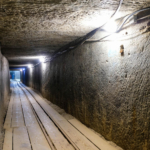Choosing The Right Equipment For Tower Rescue
Choosing the right equipment for tower rescue is like selecting the right tools for any challenging task—it can make all the difference. In tower climbing and rescue operations, having the right gear ensures not just success but safety. It’s crucial to approach these situations prepared and equipped with tools that you can rely on. When lives are at stake, there’s no room for compromise. That’s why understanding your equipment and choosing wisely is so important.
Operating at heights brings its own set of challenges. Tower rescue operations are complex, needing fast thinking and precise action. The right gear serves as a reliable partner, offering support and confidence in the midst of a nerve-wracking situation. Without it, even highly trained individuals can find themselves at a disadvantage. Ensuring you have the appropriate equipment enhances your efficiency and safety, allowing you to focus on the critical job at hand.
Understanding Tower Rescue Operations
Tower rescue operations involve a lot more than climbing high structures. It’s about readiness and having the capability to perform rescues quickly and effectively. Rescues aren’t just a matter of climbing up and down—it’s about maneuvering in tight spaces, working with ropes, and ensuring the absolute safety of both the rescuer and the person being rescued.
Effective tower rescue means being able to handle dynamic situations with the right preparation. This requires properly fitting climbing harnesses, advanced rigging systems like pulleys, and secure anchors to manage weight and movement. Each piece of gear must work in harmony, ensuring smooth and safe operations. Training for these scenarios involves hands-on practice, allowing climbers to feel secure in their ability and comfortable with their equipment.
Tower climber training also emphasizes the mental aspect of rescue operations. Knowing how to stay calm and make quick decisions under pressure is part of the training. With its diverse landscapes and unpredictable weather, locations like Perth require rescuers to be adaptable and ready for anything. So, understanding every aspect of tower rescue—from equipment handling to safety protocols—is essential for anyone involved in these high-stakes situations.
Key Equipment For Tower Rescue
Selecting the right gear for tower rescue goes beyond grabbing what looks good. It’s about understanding what each piece does and ensuring it’s up to the task. For starters, harnesses and fall protection top the list. These are your first line of defense. A good harness should fit snugly but comfortably and include features like quick-release buckles and adjustable straps, providing both safety and freedom of movement.
Next, ascenders and descenders play critical roles. These tools help you move along ropes with ease, ensuring you can navigate up and down efficiently without excessive strain. Their simple yet effective mechanical designs make movements smoother and less tiring.
Let’s not forget lanyards and cords. These are more than just ropes. They connect you to anchor points and keep you secure. When selecting these, look for high-quality materials that resist wear and tear. Consistent checking for damage or wear is essential, ensuring they’re always ready to perform when needed.
Factors To Consider When Choosing Equipment
When evaluating equipment, durability and strength sit high on the priority list. Equipment needs to handle rough conditions without failing. Think of it like buying a dependable vehicle that stands up to tough road conditions. You want gear that’s both strong and reliable, offering peace of mind every time you use it.
Comfort and flexibility are also crucial. Ergonomic designs mean that gear won’t rub or pinch during long climbs or rescues. The right equipment should feel like an extension of your body, allowing you to focus on the task rather than any discomfort. Adjustable features often make a big difference here, catering to individual needs.
Lastly, consider the compatibility of each item with other gear. There’s nothing worse than discovering your new harness doesn’t fit with your current set-up. Ensure that all pieces integrate seamlessly, creating a cohesive rescue setup. This harmony in equipment means less hassle and more focus on what really matters—safety and performance.
Best Practices for Maintaining Rescue Equipment
Taking care of your gear can significantly extend its life and maintain its dependability. Regular inspections are your first step. Imagine checking the air pressure in your car tires; it ensures they’re ready for the road. Inspect your equipment for any signs of damage or wear regularly to catch issues early.
Proper storage also plays a part. Keeping items clean and dry prevents unnecessary wear. Store equipment in a cool, dry place, away from direct sunlight or harsh elements, to keep it in peak condition.
Moreover, regular training and drills keep your skills sharp. Practicing with your gear helps you become more familiar with its operation and potential quirks. This ongoing practice ensures you’re confident and competent in using your equipment when it truly counts.
Bringing It All Together
Choosing and maintaining the right equipment for tower rescue isn’t just a task—it’s a responsibility. Each piece of gear needs careful selection and regular care. While they may seem like small details, each contributes to a larger picture of safety and success in tower rescue operations. Understanding how your equipment works and ensuring it integrates smoothly into your routine is key to staying prepared. Remember, in tower rescue, being well-equipped and well-prepared makes all the difference.
When you’re ready to deepen your expertise in tower rescue and want hands-on experience with the best practices, consider joining a training session. Discover more about tower climber training at Access Unlimited to enhance your skills and ensure you’re always prepared for any situation. Equip yourself with the right knowledge and technique to stay safe and efficient on the job.



